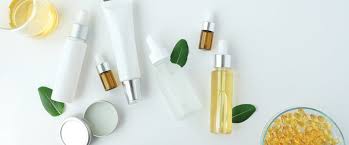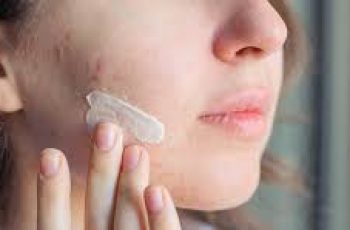
Clean Skin Care and Clean Beauty
Clean Skin Care and Clean Beauty- Are clean products better?
There are many clean beauty brands, but what exactly does “clean” mean in terms of beauty products and skin care? Are clean skin care products better?
This blog will discuss what clean skin care means, nontoxic skin care products, various clean beauty standards, and if clean skin care is worth the extra expense.
Basically- clean products are really not any better, in fact some are worse because they are based more on marketing than efficacy. But you cannot make a sweeping statement about all clean beauty products because there is so much discrepancy about what clean means.
This blog will also address who should use these products, what health risks cosmetic ingredients may have, and the issues that need to be considered when trying to decide if a brand shares your values and ethics.
What does clean skincare mean?
Products that are considered clean skincare do not have any ingredients in them that cause harm to the person using the skin care product.
Reputable and established companies do not use ingredients known to be harmful, so in many ways this is a marketing term and is based on fear and misunderstanding.
With that said- there are ingredients that are questionable that you need to know about.
It can be difficult to tell the difference between science-based information and marketing claims.
Many companies and organizations have their own standards for what they consider to be clean beauty, making it hard to determine a universal definition.
California’s Proposition 65 and Hawaii’s recent ban on certain sunscreen ingredients illustrate the varying regulations that exist.
The Environmental Working Group rates the safety of ingredients based on a number of factors, while the Cosmetic Ingredient Review evaluates ingredients for safety and contact dermatitis risk.
Despite these efforts, there is still much debate over what constitutes “clean beauty.”
Do dermatologists recommend clean skin care?
Dermatologists do not use the term clean beauty because it is not a set scientific definition.
But yes- dermatologists recommend safe skin care that does not cause health risks.
The term “clean beauty” has a huge marketing buzz word and the true meaning is unclear.
In Jan 2023, The New York Times said that 1/3 of beauty products are now labeled as clean. (2) They quoted many sources that said the term is confusing and “doesn’t really mean anything.”
I think the subject of safe skin care is an important one. We need a standardized definition for safe skin care that us used consistently and used properly- however this requires an intimate knowledge of cosmetic chemistry. I propose using the terms hazardous and safe, rather than clean and unclean, or toxin and nontoxic.
Later in this blog I will discuss how I analyze various ingredients and their safety. To find my review on ingredients labelled as hazardous, toxic or dangerous., visit this blog that is coming soon.
Keep reading to learn how 2 safe ingredients can interact to form a toxic one. This is why the order of skin care products in your routine matters.
Let me help you find a safe skin care products and tell you how to combine them in a safe routine for your Baumann Skin Type (There are 16!)
Once you take the quiz, you will receive a list of products right for you for each regimen step.
You can choose products based on what is important to you such as clean, environmentally friendly, cruelty free, recycled packaging, medical grade, natural, and organic.
Take the Quiz
Who should use clean skin care?
There are real health risks associated with skincare ingredients, especially when you are planning to conceive, are pregnant, breastfeeding, very allergic, or susceptible to skin inflammation.
Although everyone should strive to use the healthiest products, clean skin care is most important in 3 main situations: babies / children, pregnancy, and when trying to get pregnant.
Newborns, babies and small children
Newborns, babies, and small children have an increased risk of bad effects from skin care products because they have a much higher ratio of skin surface area to body mass as compared to adults. This means they absorbed more ingredients compared to their body mass than adults.
Pregnancy and breast feeding
Many ingredients in skin care absorb and can pass into your baby’s body. The ingredient with the highest concern are retinoids, parabens, 5- alpha reductase inhibitors, and ingredients that affect hormones.
Planning to conceive
Both men and women should consider what they are putting on their body in the 3 months prior to trying to conceive a baby. There are ingredients that can affect hormones and decrease fertility.
Health risks associated with “non-clean” beauty products
Hazardous beauty products are products with ingredients that have deleterious effects on health. and have real evidence of issues.
Most of the fears about ingredients causing health risks have no evidence to back up these fears. But these ingredients end up on “banned ingredient” lists anyway because of brand marketing or public-relations concerns. After all – there are many new clean beauty products in 2023 because they obviously sell well and appeal to consumers.
I divide the hazardous effects of skin care into these categories:
allergenicity (allergy, contact dermatitis)
carcinogenicity (cancer)
hepatotoxicity (liver problems)
hormone imbalance (usually estrogen effects)
immunotoxicity (effects on immune system)
irritation (irritant dermatitis)
nephrotoxicity (kidney problems)
neurotoxicity (nerve damage)
reproductive toxicity (decreased sperm counts, decreased conception)
Nontoxic skin care
When you want to shop for toxin-free skin care- you are really looking for safe skin care products.
“Nontoxic skin care” only applies to natural products and the term does not apply to chemicals ingredients made in the lab.
Terms to know:
Toxins are natural poisons that come from plants, insects and other living species
Poisons are substances capable of causing illness or death when you are exposed to sufficient quantities
Hazardous chemicals cause adverse health effects such as rashes, cancer, and hormonal changes.
Although no one uses the term- it is correct call ingredients in skin care that are harmful ‘hazardous ingredients” rather than toxins.
Both natural and chemical ingredients can adversely affect your skin health- especially if you use:
hazardous ingredients
the wrong products for your skin type
products in your skin care routine that should not be used together
skin care products incorrectly
Clean Skin Care Routines
There are some issues you need to think about when looking for the healthiest skin care products.
Not only do the ingredients need t be safe, but they need to be combined with other ingredients properly.
Then you need to layer them correctly in your skin care routine.
Safe ingredients can combine together to form a hazardous ingredient!
Even clean skin care products can be combined together in a way that causes health risks.
So- the step order of your skin care routine matters.
We can help you build your skin care routine.
Take the Quiz
Clean Beauty Standards Vary
There are different seals and certifications to help you know if a beauty product is clean. Stores, brands and even Allure magazine have their own definitions of what clean means.
The definition of clean varies from store to store; brand to brand; and there is no agreed upon definition of clean beauty.(1)
What Sephora calls clean skin care is not the same as what many skin care brands and stores call clean skin care.
Since no one seems to agree on the definition of clean, I reviewed all of the data and beauty standards myself and formed my own opinion as a dermatologist. (1)
My process:
I reviewed the clean standards of the biggest stores such as Sephora, Ulta, Neiman Marcus, Walgreens/ Boots, Target and Whole Foods.
I reviewed the top brands standards for clean beauty when possible (Not all will share this information).
I made a huge spreadsheet of ingredients and which were banned by which stores
I consulted with The Good Face Project and used their software
I made lists of the “detrimental effects” of each ingredient and read the studies, data and evidence myself. (ADD LINK)
Looked up ingredient on the Environmental Working group (EWG.org) site and read all of their comments and references
Read any publications by the CIR (Cosmetic Ingredient Review Board)
Spoke to may cosmetic chemists from various brands including Loreal, Skinceuticals and Burt’s Bees
Discussed with naturopathic doctors and herbalists who understand natural ingredient sourcing
Lectured about it to dermatologists and discussed with dermatologists,
I feel confident that I now have a very good understanding of which ingredients are toxic and which are safe.
You can read my finding for each ingredient in a different blog.
Click here for a list of ingredients and their hazards.
Are natural products always safer than synthetic ones?
Chemicals can come from plants, animals or can be made in the lab (synthetic).
It is important to note that natural products are not necessarily safer than synthetic ones. Natural ingredients can be toxic.
For example, Cocamide DEA, an ethanolamine derived from coconut, is often found in “natural” skincare products but can still form carcinogenic nitrosamines.
It is also essential to ensure that all products used in a skincare routine are compatible with one another.
In conclusion, there is still much debate and disparity surrounding what defines clean beauty, and as a dermatologist, I will continue to address these issues in my cosmeceutical critique columns
How do I know if a beauty company’s clean standards align with my own values and beliefs?
The clean seal only represents if the ingredients in the product are hazardous or safe. This does not always mean that the company aligns with all of your values.
There are other things to consider when choosing products such as:
cruelty free (no animal testing)
Does the company give back and support charities?
free of animal derived ingredients
free trade
How does the company handle their own garbage and waste?
ingredient sustainably sources
marine safe
medical grade ingredients
natural ingredients
organic
packaging: recycled, biodegradable, or made from recycled products
safe for environment
vegan
water type used in the products
Do clean beauty products really work as well as their “non-clean” products?
How well clean products work depends upon many factors such as the ingredient type, your skin type, how you layer the products and what other products are in your skin care routine.
It is confusing!
Let us guide you.


